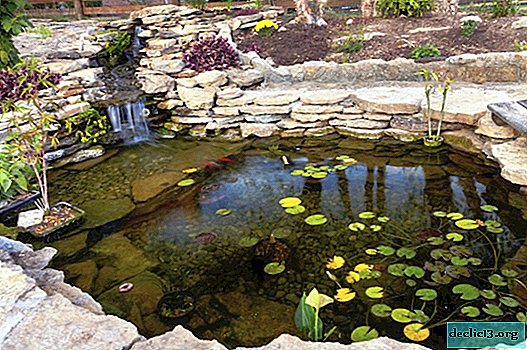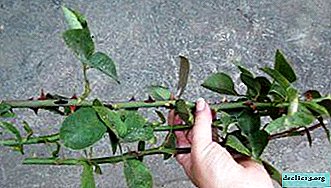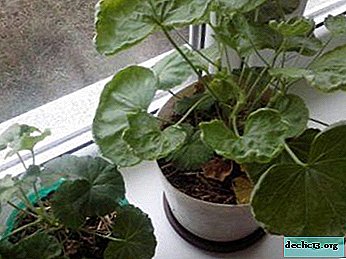The most unusual orchid dracula: description, care and photo of the plant

Dracula orchid is one of the most beautiful and unusual varieties of orchids. Dracula in Latin - "dragon": this flower was named after the original form of inflorescence, resembling a dragon's face.
These orchids are loved by flower growers for their unusual and impressive appearance, rich colors and the ability to bloom almost all year round. in this article we will talk about the features of this type of orchids, about the rules of cultivation, planting, care and reproduction. Also watch a helpful video on the topic.
Gender Definition
Dracula is not one species, but a whole genus of orchids, and the species in it 123 (some call the number 126). Its homeland is Ecuador, and the greatest species diversity is also observed there. Some species can be found in Mexico and Peru - this is the most northern and southern borders of the distribution of the genus.
Like all orchids, dracula is an epiphyte (a plant that attaches to other plants, but does not parasitize on them, but uses it as a support). However, it often grows directly on the ground. All orchids of this species are characterized by short stems, long narrow leaves and a specific flower shape: three sepals, fused at the base, with long narrow outgrowths at the ends.
ATTENTION: Despite its scientific name, the specific color and shape of the lip (a specially modified petal) give most flowers a resemblance not to a dragon, but to the monkey's face. Therefore, the second, unofficial name for Dracula is monkey orchid.Another characteristic feature of draculas is the absence of pseudobul (special fleshy formations similar to bulbs in which epiphytic plants store moisture). In part, the functions of pseudobulbs are assumed by loose, spongy leaves.
For the first time, a representative of the Dracula clan was described in 1870 by the botanist Heinrich Gustav Reichenbach. This flower impressed the researcher with its unusual shape, for which it received the name "chimera". Initially, it was assigned to another genus - Masdevallia, but in 1878, on the basis of other finds, the genus Dracula was separated from the Masdevallia genus, and the "chimera" was assigned to it, receiving the scientific name Dracula chimaera.
The genus is divided into three subgenera, of which two are monotypic (consisting of one species):
- Dracula sodiroa - it includes the only species of Dracula sodiroi.
- Dracula xenosia - it includes the species Dracula xenos.
- Dracula dracula - this subgenus includes all other species.
Photo
Next, you can see in the photo what the dracula orchid looks like:
"Dracula Sodiroa"
"Dracula Xenosia"
"Dracula Dracula"
Growing at home
Orchids of the genus Dracula are very popular as greenhouses and indoor plants.. Florists love them for their impressive appearance, ability to bloom year-round, and also because it is much easier for draculas to create favorable conditions than for most other orchids.
IMPORTANT: In nature, these flowers grow in the mountains, in conditions of high humidity of the soil and air, poor lighting, and, most notably, a fairly low air temperature. The most comfortable temperature for these orchids is +15 C. In the warmer months, draculas can tolerate temperatures up to +25 C.Seat selection
Choosing the right place is crucial because orchids of the genus Dracula are extremely sensitive to sunlight. Under natural conditions, they occupy the lower tier of the tropical forest, where direct sunlight does not penetrate, therefore a too bright sun can literally burn these flowers - characteristic burn spots will appear on the leaves. However, if the place is too dark, the orchid simply will not bloom.
Ideal for these colors - diffused light or partial shade. Experts recommend placing them on the east or southeast windows. The northern ones are also suitable, however, in the autumn-winter time, the orchids on the northern windows will not have enough light, and you will have to take care of the artificial lighting. Southern ones are highly not recommended - the plant will burn leaves and dry out. If there is no other option, it is recommended to keep the plant at least a meter away from the window and cover it with tulle.
Disembarkation
It is recommended to use a mixture of finely chopped coniferous bark with peat, sawdust, charcoal, and most importantly, sphagnum moss, live or dried, as a substrate for growing these orchids. This mixture is placed in wooden or plastic containers. Orchids can be grown in pure sphagnum. As it dries, it is necessary to water the moss with soft water, preferably rain.
Air humidity
For places of natural growth of orchids, frequent rains and thick fogs are characteristic. Therefore, these flowers require high humidity - from 60% and above, the ideal mark is 80-85%. To increase the humidity directly next to the plants, you can use an air humidifier or equip trays with wet expanded clay.
Watering
 To water these flowers you need soft water, without chlorine and lime. Rain, melt or distilled is best suited, but if there is no way to get it, a mixture of distilled and ordinary tap water in a 1: 1 ratio or filtered tap water will do.
To water these flowers you need soft water, without chlorine and lime. Rain, melt or distilled is best suited, but if there is no way to get it, a mixture of distilled and ordinary tap water in a 1: 1 ratio or filtered tap water will do.
Irrigation mode directly depends on air temperature and degree of illumination. It must be remembered that the plant not only absorbs moisture, but also evaporates it from the surface of the leaves. At a temperature of 15 to 22 C normal for an orchid, moisture evaporates about as much as it is absorbed. But with increasing temperature, the process is violated: evaporation is accelerated, and absorption, on the contrary, slows down. therefore in the warmer months, orchids are especially needed frequent watering and artificial humidification.
The substrate in which the flowers grow must be moist. However, if you grow orchids in pots, in no case should you allow stagnation of water either at the bottom of the pot itself or in the pan - this will lead to decay of the roots and lower part of the plant itself.
Top dressing
Dracula orchids are extremely sensitive to salts, which are found in large quantities in fertilizers. Therefore, you need to feed these flowers with great care, diluting the dose indicated on the package two to four times. It is necessary to use only special fertilizers marked "for orchids", designed not for the land, but for the substrate in which they are usually grown.
Transfer
Dracula orchids do not need frequent transplants. They should be replanted only if the substrate is salted or the plant has grown too much.
Bloom
 With proper care, all types of dracula orchids can bloom year-round. These flowers do not need a dormant period and special conditions during flowering. If necessary, you can stimulate the appearance of flowers by "temperature difference" - creating conditions under which the difference between day and night temperatures will be 3-5 degrees (at night the temperature should, of course, be lower). After flowering, it is necessary to remove the drying flower stalk. Sometimes a plant transplant may be required.
With proper care, all types of dracula orchids can bloom year-round. These flowers do not need a dormant period and special conditions during flowering. If necessary, you can stimulate the appearance of flowers by "temperature difference" - creating conditions under which the difference between day and night temperatures will be 3-5 degrees (at night the temperature should, of course, be lower). After flowering, it is necessary to remove the drying flower stalk. Sometimes a plant transplant may be required.
Breeding
Orchids give a large number of seeds, but at home it is very difficult to germinate them. Orchids are usually propagated in a vegetative way - separating parts from an adult plant. Slices must be dried within 12-20 hours, dipped in crushed charcoal, after which they can be planted in a separate container.
Diseases and Pests
Unfortunately, dracula orchids are susceptible to a large number of diseases, and are also very "attractive" to pests. To list them all is almost impossible - there are more than 90 various orchid pests, from aphids to fungal infections.
However, the most common causes of diseases of these colors should be mentioned:
- Thrips - the most dangerous insects. A plant affected by thrips practically does not lend itself to resuscitation. To prevent the appearance of these insects, periodically spray the plant with infusion of garlic.
- Whiteflies settle on leaves and lay their larvae on them. This pest is resistant to poisons, therefore it is more reliable to remove the larvae manually and spray the orchid with calendula infusion.
- Aphid eats vegetable juice, literally "sucking out" a flower. Aphids are also best removed manually with a cotton swab dipped in soapy water.
- Fungal infections orchids are also quite common. They are treated with special fungicides for plants. During treatment, the infected plant must be isolated from the rest.
Carefully observe the conditions of the orchid, and it will delight you with stunning flowers all year round!
Useful video
Watch the video about the features of the cultivation and care of the Dracula orchid:

















